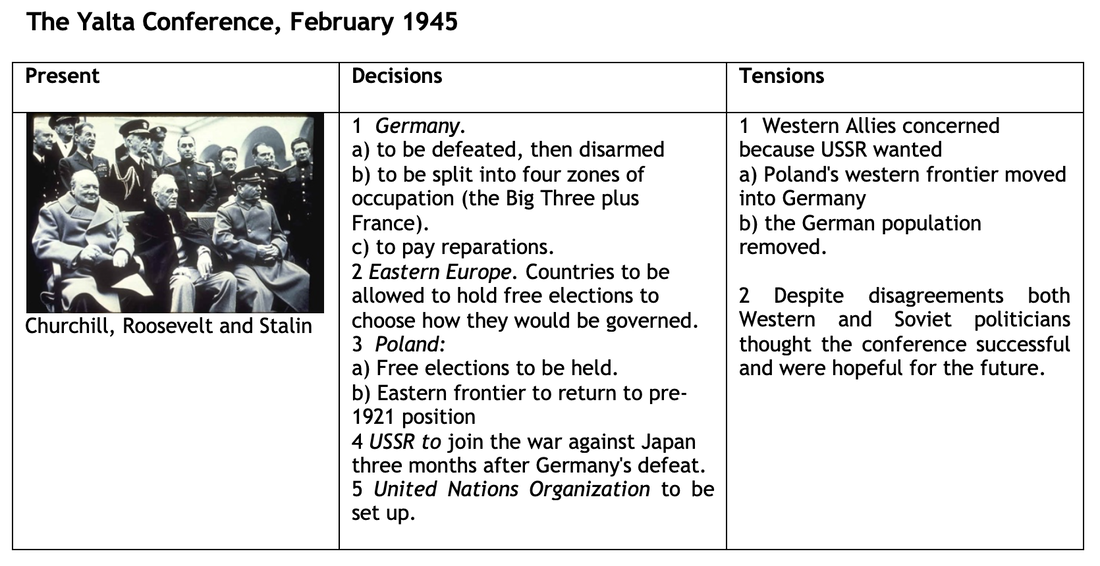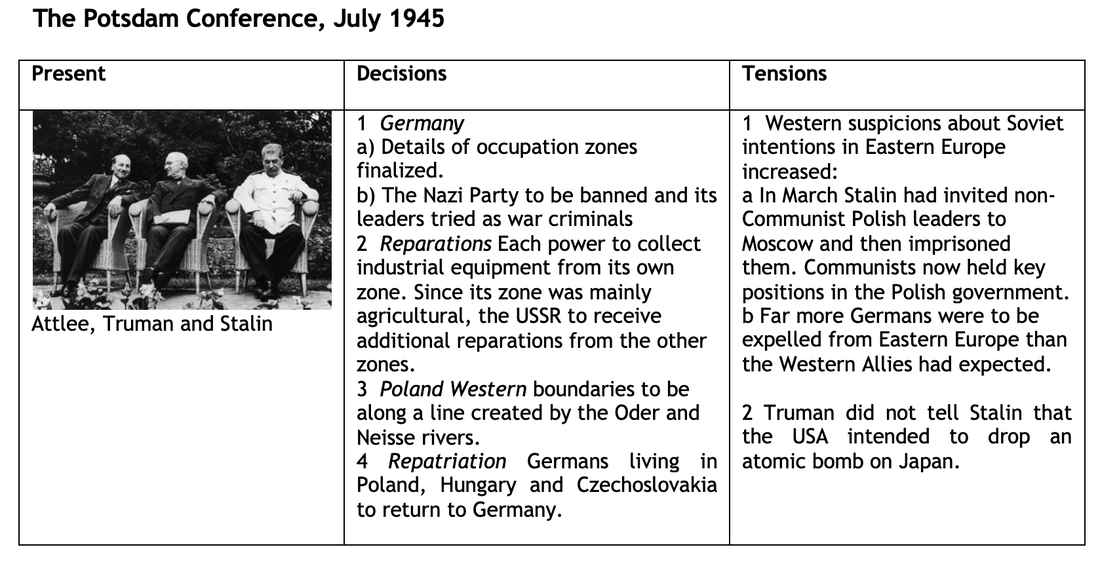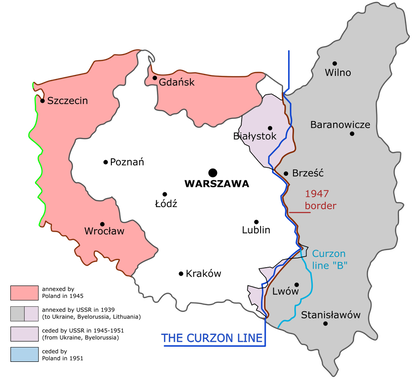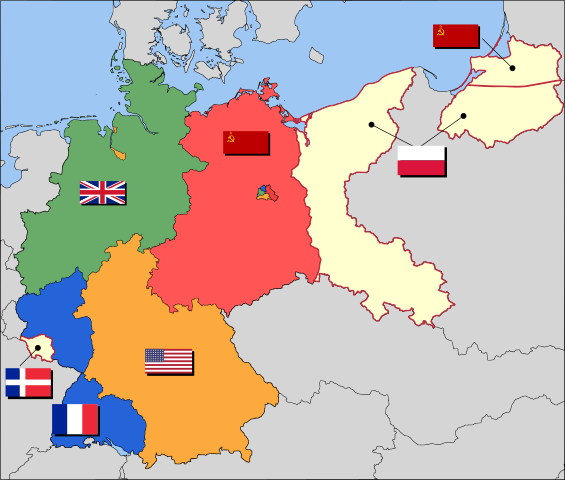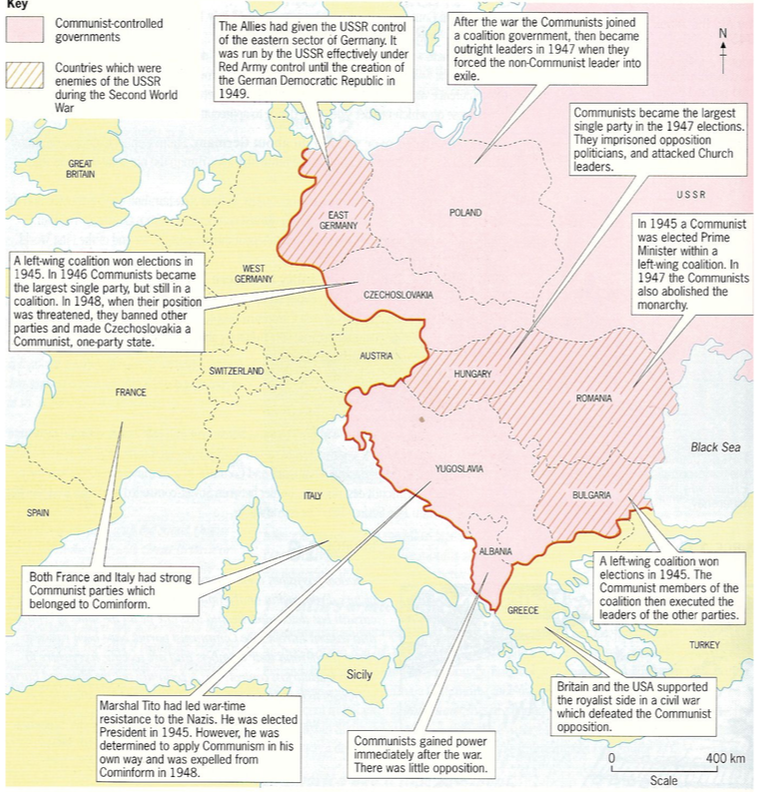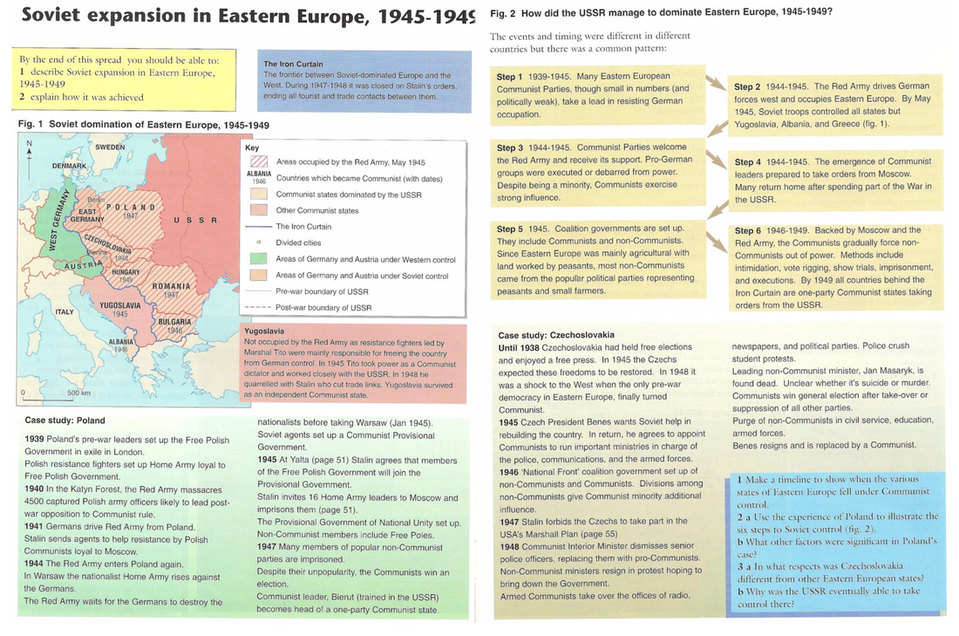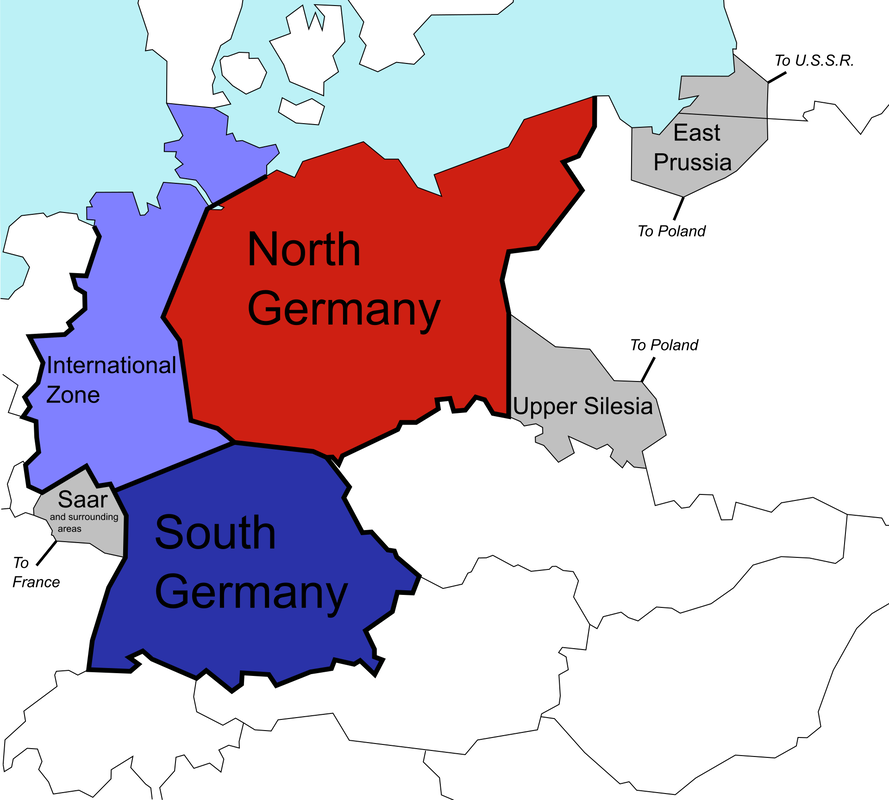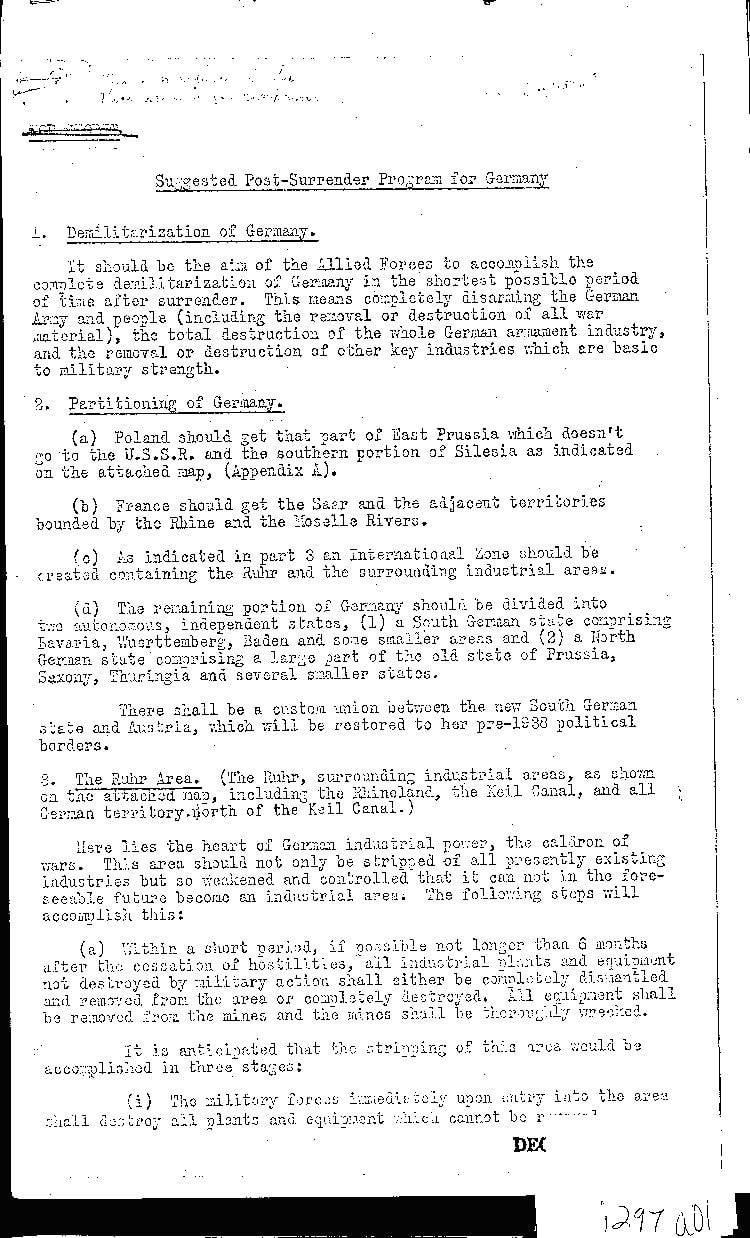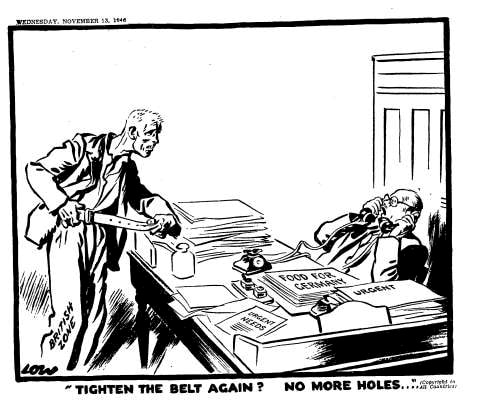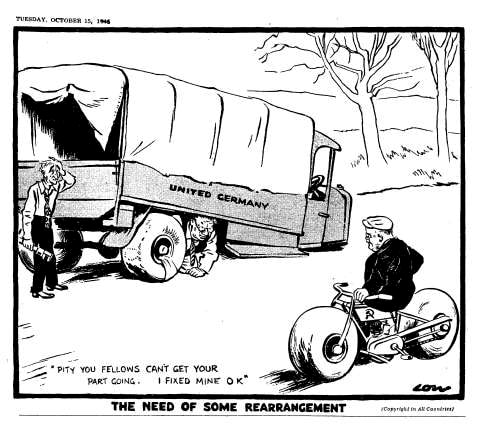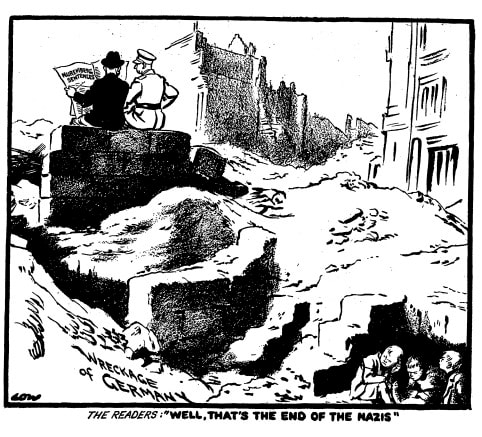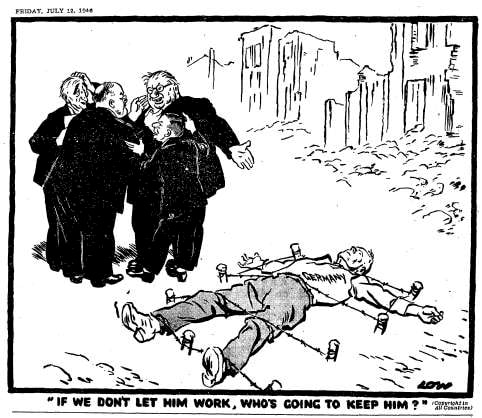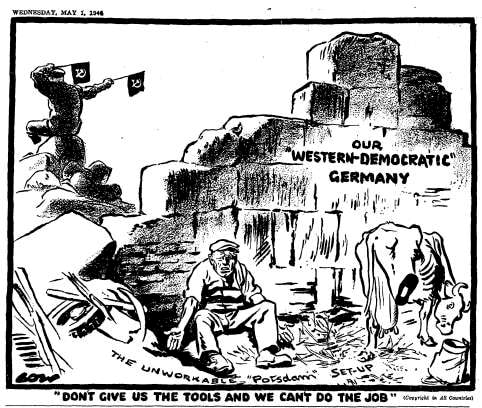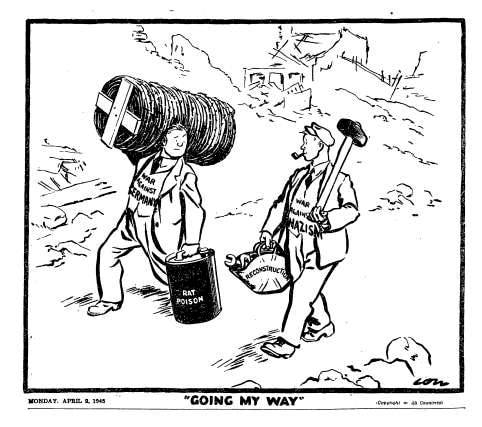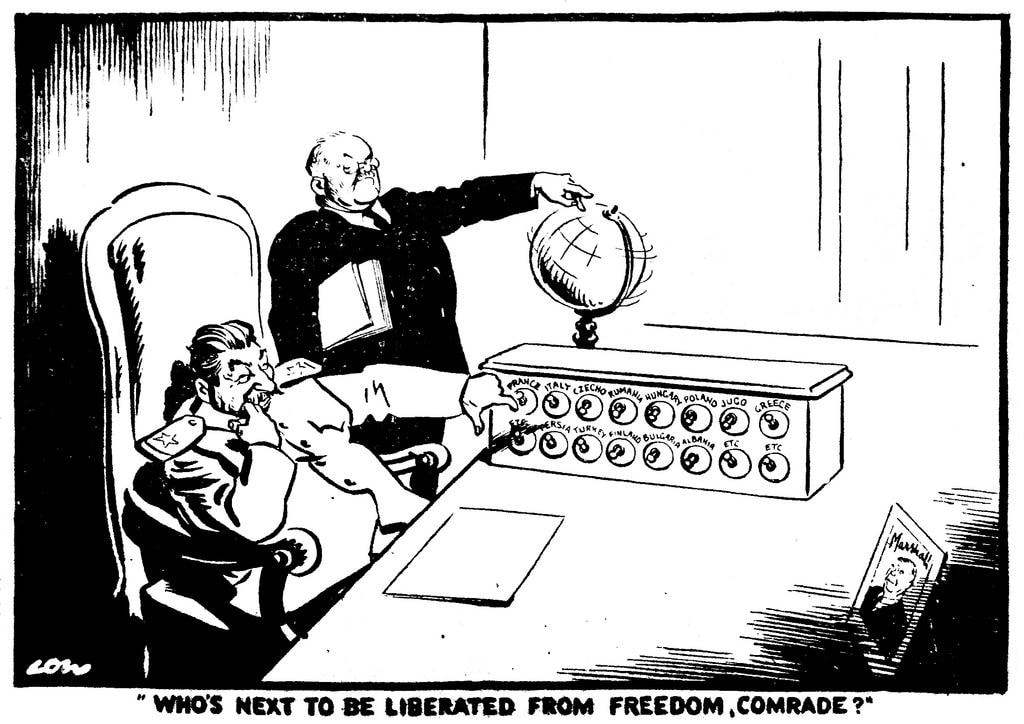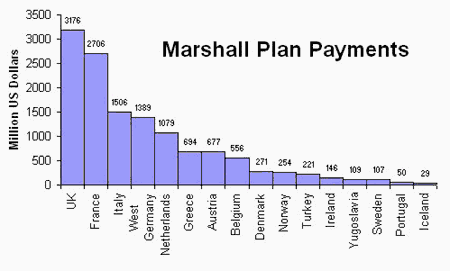Lesson 2 - The short-term causes of the Cold War 1945-47
What had the allies agreed at Yalta and Potsdam?
Activity 1
Read the text above and watch the short video extracts on Yalta and Potsdam. Complete the 'focus task' on page 323 of your textbook, 'Why did the Allies begin to fall out in 1945?'
Read the text above and watch the short video extracts on Yalta and Potsdam. Complete the 'focus task' on page 323 of your textbook, 'Why did the Allies begin to fall out in 1945?'
The three sources of tension which caused the Cold War: Eastern Europe, Germany and European Reconstruction.
1. Eastern Europe
The Declaration on Liberated Europe, agreed at the Yalta conference in February 1945 had supposedly guaranteed democratic elections for all states which were to be liberated from Nazi Germany's control. In reality though, where the USSR was now in occupation, Stalin had no intension of giving up control of territories that were an essential 'buffer' to the defence of the USSR. Three times since 1914 Russia had been invaded through Poland. Across central and eastern Europe pro-Soviet regimes were imposed and where elections were held, they were fixed so as to give Communist Parties the necessary majority. (See map below and on p.324) By 1946 an 'iron curtain' had been imposed on Europe.
|
|
|
|
Britain's inability to sustain support for anti-communist regimes in Greece and Turkey led President Truman to break with the established US policy of isolationism. In March 1947 he announced what became known as the Truman Doctrine, 'I believe that it must be the policy of the United States to support free peoples who are resisting attempted subjugation by armed minorities or by outside pressures.'
This signalled American determination to resist further Soviet expansion and to do so by the deployment of countervailing power, by what was called the policy of containment.
|
2. Germany
Churchill and Roosevelt had met in Quebec in September 1944 and agreed a policy on the future of Germany. Named after Henry Morgenthau, United States Secretary of the Treasury, the Morgenthau plan was designed to deindustrialise Germany and to break her up into separate states. Supported by France and the USSR, this policy was intended to prevent Germany from ever being able to wage war again. In the words of Roosevelt 'I want the Germans to know that this time at least they have definitely lost the war'.
|
A map of Germany after Morgenthau
|
A future Germany as envisaged by Morgenthau
|
As we have seen at the Potsdam conference, Germany was divided, but not in the way foreseen by Morgenthau. Such was the complete and absolute devastation of Germany, the Allies needed to take over the running of the country, with each of the four powers responsible for one sector each. Divisions between the former allies about how the sectors such be administered were apparent from the start. As you will have seen in the film above, the USSR plundered its eastern sector for reparations, whereas the western powers became concerned that a hungry and desperate German population might turn once again to political extremism.
Before the war, the English cartoonist David Low was a strident critic of the allied policy of appeasement. After the war he was a strident critic of the post-war occupation. The following cartoons were all published in 1945-46.
Before the war, the English cartoonist David Low was a strident critic of the allied policy of appeasement. After the war he was a strident critic of the post-war occupation. The following cartoons were all published in 1945-46.
Activity 2
Select one of the six cartoons above and paste it into your notes. Referring to details in the cartoon, explain the message that Low is trying to convey.
3. European Reconstruction
The third important postwar dispute within the grand alliance concerned European reconstruction. The Truman Doctrine had established a set of political policies, but if communism was to be 'contained', western European capitalism needed to be strengthened. As American General Lucius Clay stated, 'There is no choice between being a communist on 1,500 calories a day and a believer in democracy on a thousand'. The communist parties of France, Italy and other countries had established a strong position for themselves after the war. Until May 1947 the French and Italian communist parties were members of ruling coalitions, and communists participated in the government of other West European states as well. The American solution was the Marshall Plan. US Secretary of State, George Marshall's plan for a European Recovery Program, was made public in a famous Commencement Address at Harvard University on June 5th 1947.
|
|
In sponsoring a European economic recovery which would contribute to political stability, Marshall aimed to undermine support for the communist left and to strengthen the political position of anti-communist parties and movements. By the time Marshall Aid came to an end, in 1952, the United States had spent some $13 billion, more than all previous US overseas aid combined. Unlike previous support during the war, Marshall Aid was not loans to be paid back but a grant, a gift for European countries to spend as they wished. If a Marshall Plan was attempted today (as some are suggesting is needed in a post-Covid-19 world and President Biden is attempting to pass) it would cost over $200b. But it wasn't just financial support. As the USSR had interfered in the 'elections' on central and eastern Europe, so now also did the Americans through the anti-communist, covert action of the CIA. (see film left)
|
|
Initially, the USSR and central and eastern European countries applied for Marshall Aid. But at the Paris conference in July 1947 which was established to coordinate the funding, serious divisions emerged. The British and French insisted that decisions must be made by all European countries - east and west - together. The USSR considered this an unacceptable attempt by the western allies to interfere in the internal affairs of the communist regimes. The USSR withdrew from the talks and forced its satellite states in eastern Europe to do the same. This would have significant implications for Yugoslavia who refused to withdraw and for Czechoslovakia which had a genuine democratically elected communist government in coalition with non-communist parties. Tito's Yugoslavia was expelled from the Eastern Bloc and the communists seized absolute power in Czechoslovakia. These events persuaded the US Congress to release the funds for Marshall Aid.
|
|
|
|
|
The Soviet response to the Truman Doctrine and the Marshall Plan came in September 1947. The USSR established the Communist Information Bureau (Cominform), as a successor to the Comintern. In an important speech A.A. Zhdanov spoke of how the world had become divided into ‘two camps’ and how the USSR must defend itself from western imperialism. Comecon, the Soviet equivalent to Marshall Aid was made available for Eastern Bloc allies. |
Activity 3
Read the article by Geoffrey Roberts on the three important post-war disputes. Using the films and text above to help you, produce the text of a seven minute oral that addresses the question 'why did the Cold War begin between 1945 and 1947.
Read the article by Geoffrey Roberts on the three important post-war disputes. Using the films and text above to help you, produce the text of a seven minute oral that addresses the question 'why did the Cold War begin between 1945 and 1947.
Extras
|
|
|

